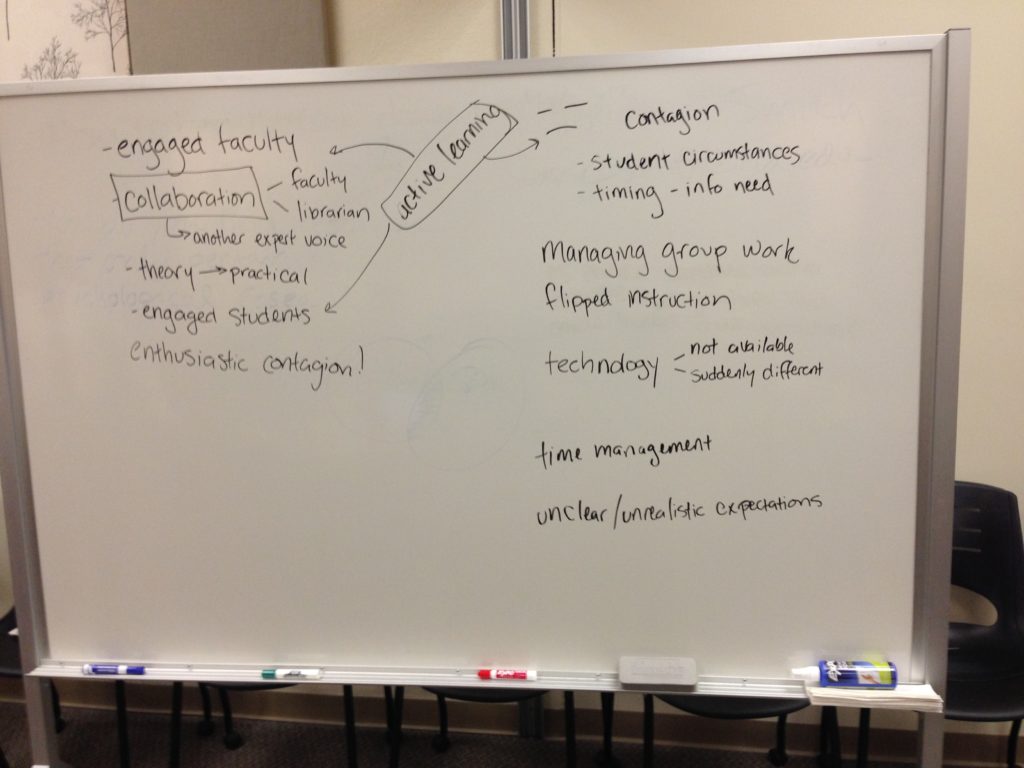We had a good turnout for the first ICoP discussion of 2017. We started out with the goals for the session: to get a sense of the teaching and learning landscape in the libraries, to get to know each other, and to identify themes for the rest of the semester’s gatherings.
Unsurprisingly, the teaching and learning landscape across the libraries is quite diverse. We have some instructors who will be in the classroom all semester and others who will mostly be working behind the scenes. Some instruction sessions are built on established relationships with particular courses, programs or subjects, while others are forging new connections. I learned that, in addition to the traditional one-shot model, instructors will be teaching collaboratively in two-shot sessions and in for-credit courses, both in person and online.
Surprisingly, we learned that we have a high concentration of people who are very handy to have around when traveling. Planning a trip? Come to ICoP.
In order to set priorities for the rest of the semester, we shared our individual stories of instruction successes and challenges and looked for some common themes.

Our success column could be titled “Enthusiastic Contagion!” (Thanks, Dan!) In particular, when we work with faculty who actively engage with us in instruction, to plan or teach a session, that engagement is mirrored in the students’ participation and focus. Sometimes, hearing two “expert voices” share their enthusiasm about a topic can spark interest in the students. At other times, the collaboration between experts can help students make the connection between a theory and its practical applications.
The first challenge that comes to mind, though, is the opposite: -_- (blah) contagion. Or, as Melissa put it, “I could have brought cake and it wouldn’t have made a difference.” Sometimes the circumstances just don’t work out for us. Students have other things going on in their lives that prevent them from fully engaging with us, the timing of the instruction session doesn’t match up with their information need, and, occasionally, the technology stops working or changes with no notice. Other challenges we face as instructors include making the best use of our limited time with students, successfully flipping our instruction, and managing unclear or unrealistic expectations from faculty.
Our conversation helped highlight the importance of meaningful engagement with both students and faculty. Over the course of our next two meetings, we’ll discuss active learning strategies that we can use in the classroom, as well as collaboration strategies to strengthen our faculty partnerships.
Our next meeting will be on March 1st at noon. Until then, please keep sharing your stories!
Thanks for a cogent overview of the meeting. So sorry I couldn’t attend. Will be there next time!